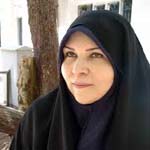MODERNITY OF PERSIAN PAINTING IN SOCIAL DISCOURSES OF CONTEMPORARY IRAN FOCUSING ON ERNESTO LACLAU’s AND CHANTAL MOUFFE’S DISCOURSE ANALYSIS APPROACH
Persian painting has been well known as a traditional art with a deep-rooted history, evolving consistently in accordance with traditions and the context of cultural changes of the society of its respective age. Therefore, compared to the previous ones, each historical period observes some modernity. As with other arts in today's Iranian society, Persian painting is not simply encountered with describing an integrated image of the sovereignty of thought; thus, with the purpose of analyzing the effects of discourse changes on creating modernity in contemporary Persian painting, the present article addresses the question that, in the context of political and social changes, what distinctive reading of modernity has emerged in contemporary Persian painting. “Ernesto Laclau’s and Chantal Mouffe’s" discourse analysis approach was used to show how some of the central signifiers are highlighted while others are marginalized in this argument; finally, discourse formulation is presented.Comparative methodology and descriptive-analytical research method were used for data collection which was implemented by examining library and field documents using fiche and imaging tool. The observed samples of contemporary Persian paintings were selected randomly from the works painted after the constitutional period (1385-1285 AH). After the Constitutional Revolution and following the political, economic, and cultural reformations that began in the late Qajar dynasty and culminated in the Pahlavi period in Iran, there was a tendency towards traditionalism and modernism. Modernizations in contemporary Persian painting can be analyzed based on four social discourses: “modern traditionalism”, “traditional modernity”, “ideological traditionalism”, and “divergence of tradition”. The results indicate that the generating forces associated with the central signifier lead to modernity in contemporary Persian painting.Persian painting in modern traditionalism discourse, beginning with the Constitutional Revolution and culminating in the first Pahlavi period and, more or less, present in both second Pahlavi and the Islamic Revolution periods, becomes hegemonic via nodal point of continuation of tradition. In this discourse, painting is reflected in the equivalence chain of historicism and nationalism and tries to hegemonize the tendency towards myth, Persian poetry and the literature of ancient Persian art by creating a chain of equivalence between the floating signifiers of historicism and archaism. Therefore, Persian painting in the ancient traditionalism discourse was engaged in competition and dispute between the naturalist method and returning to the traditional Persian painting schools. Although continuation of tradition is hegemonic in this discourse, it could achieve some innovations through using some generating forces such as court modernists (Qajar period) and the middle class as new supporters and applicants, new educational institutions, and the audience of Khayyam's quatrains. Persian painting in the discourse of traditionalist modernity was mainly formed in the first Pahlavi period with the Saqqa-Khaneh movement and in the reformation period of the Islamic Republic with post-revolutionary modernism and articulation of returning to tradition as a nodal point and elements such as decorativism, formalism, localism, and modernism. In this discourse, the art of Persian painting entered into a competition between formalism and narrativism, and finally won the battle by integrating tradition and modernism. The new middle class as well as the intellectuals of the Pahlavi government, in addition to the reformists of the Islamic Republic in 1990s, educational institutions, and art exhibitions and festivals can be considered as the most influential factors in the modernity of this discourse. In ideological traditionalism discourse, Persian painting was established by articulating the ideological reading of tradition as a nodal point and floating signifiers such as Shiite Islamism, historical Islamism, and Islamic mysticism. Moreover, here, Persian painting is identified against artistic formalism – its rival – and is located in the chain of equivalence of integrating ideological expressiveness and traditional Persian painting. Modernity in the Persian painting of this discourse can be related to the influence of revolutionary fundamentalists and art-supporting revolutionary institutions which directed national and international festivals. In the discourse of divergence of tradition, Persia painting was developed through articulating traditionalism outside of the context of tradition as the nodal point and floating signifiers such as a critical attitude towards of tradition, the heterogeneous coexistence of traditional symbols with contemporary life and multiple identities. In this discourse, Persian painting is in the chain of equivalence of challenges of traditional life in the postmodern era and traditional Persian painting is opposed to its rival, traditionalism, in form and content. Meanwhile, new artistic tools and media as well as new world markets of art, and especially the migration of artists from their homeland, are among the most important areas of modernity in Persian painting in the discourse of world art.
- حق عضویت دریافتی صرف حمایت از نشریات عضو و نگهداری، تکمیل و توسعه مگیران میشود.
- پرداخت حق اشتراک و دانلود مقالات اجازه بازنشر آن در سایر رسانههای چاپی و دیجیتال را به کاربر نمیدهد.



